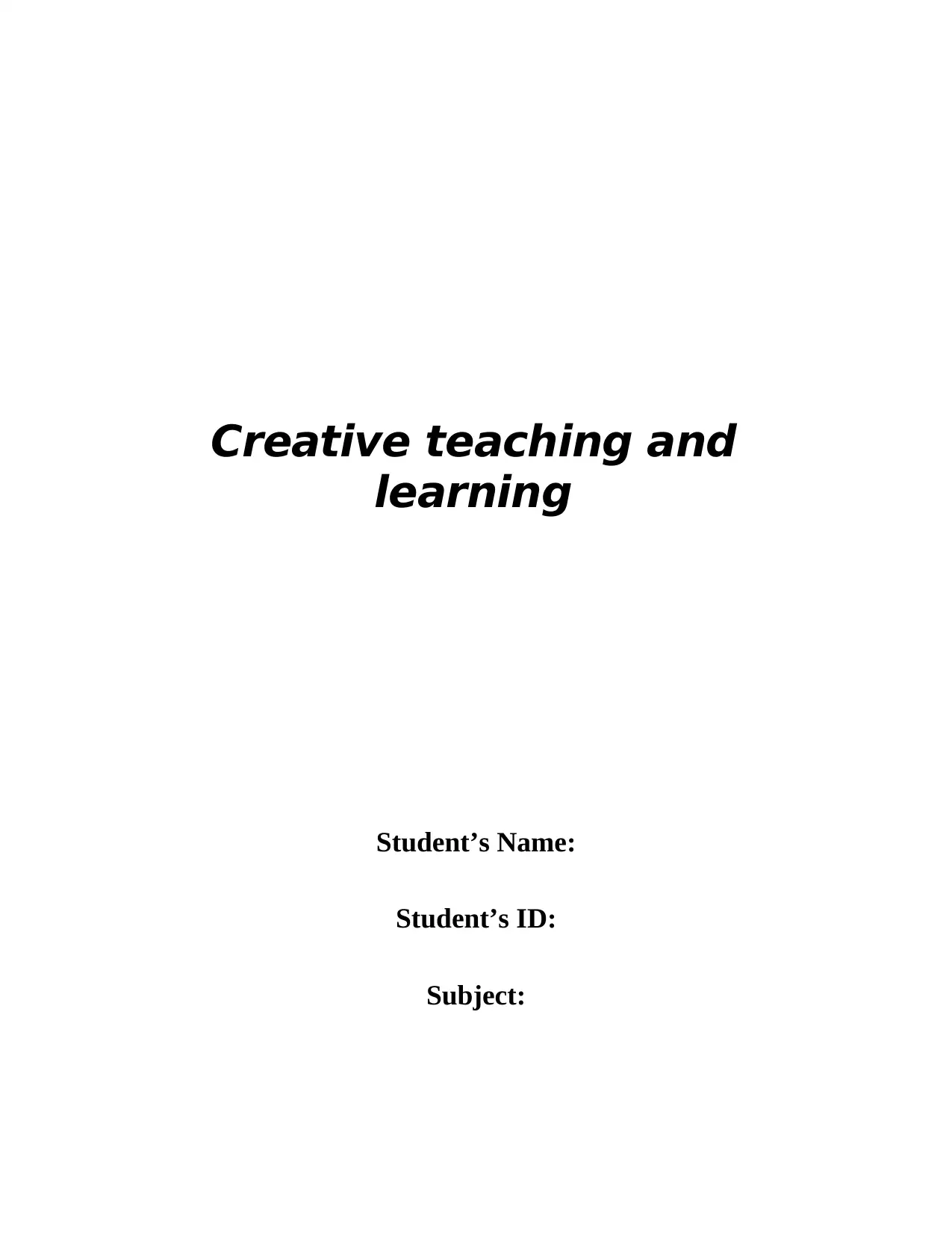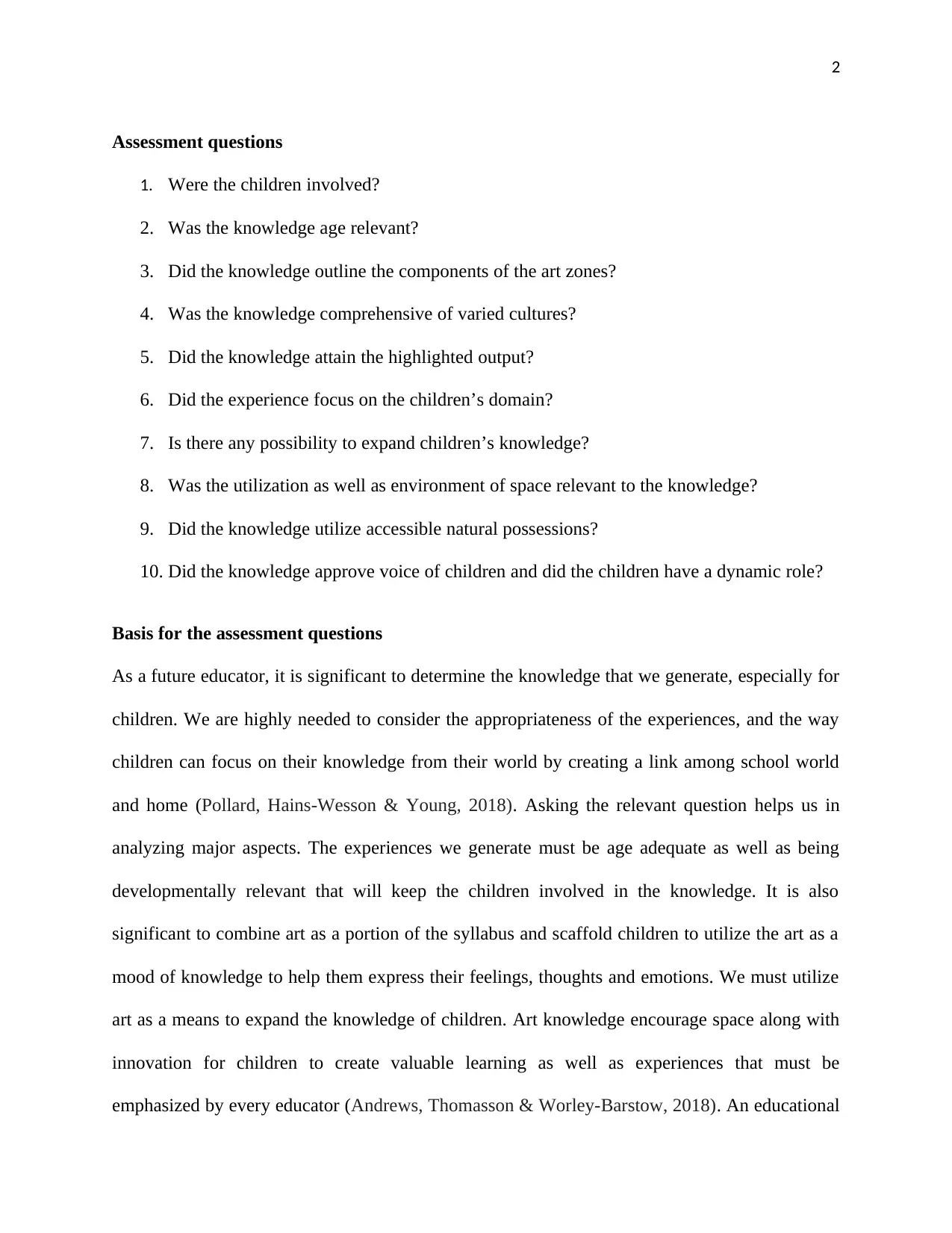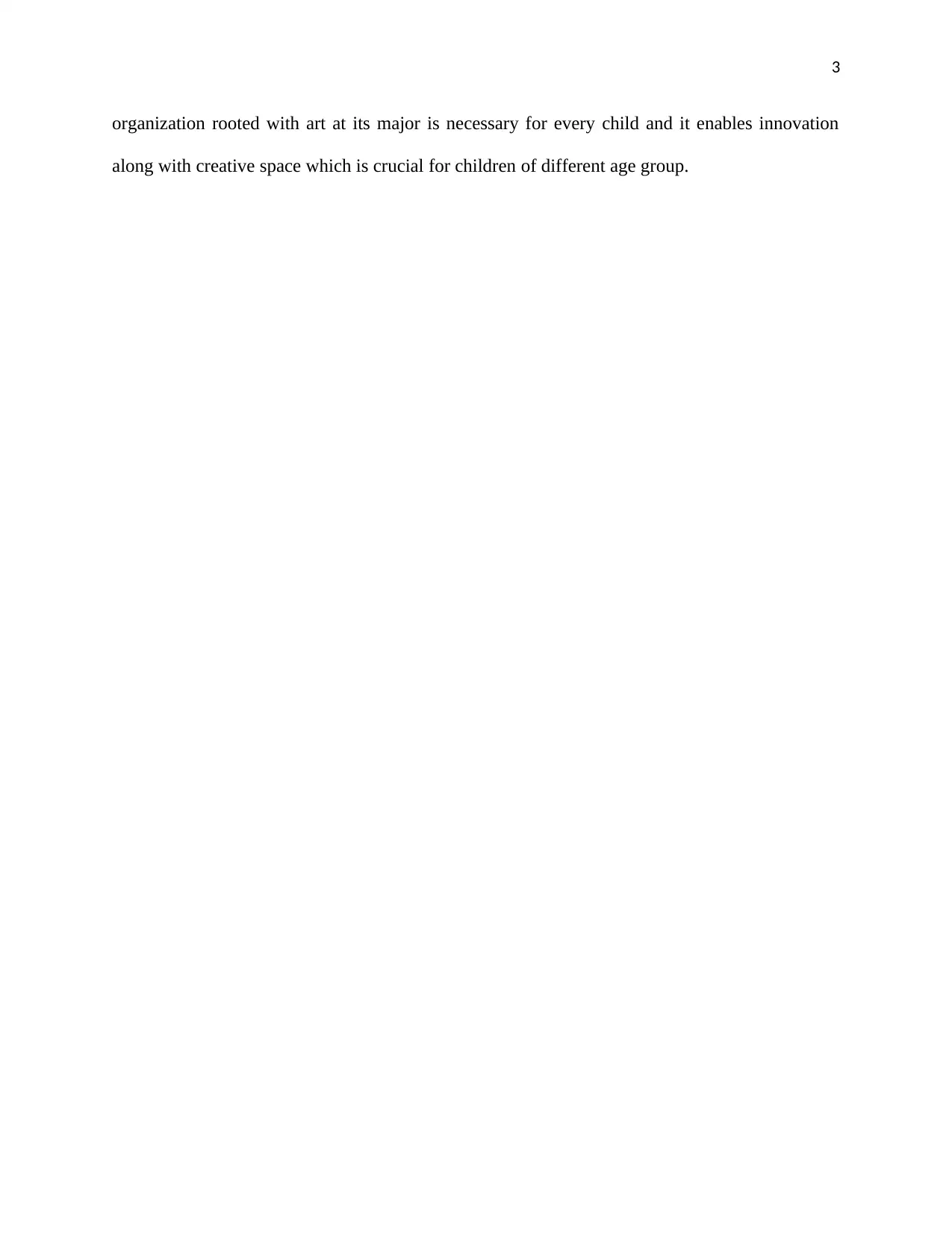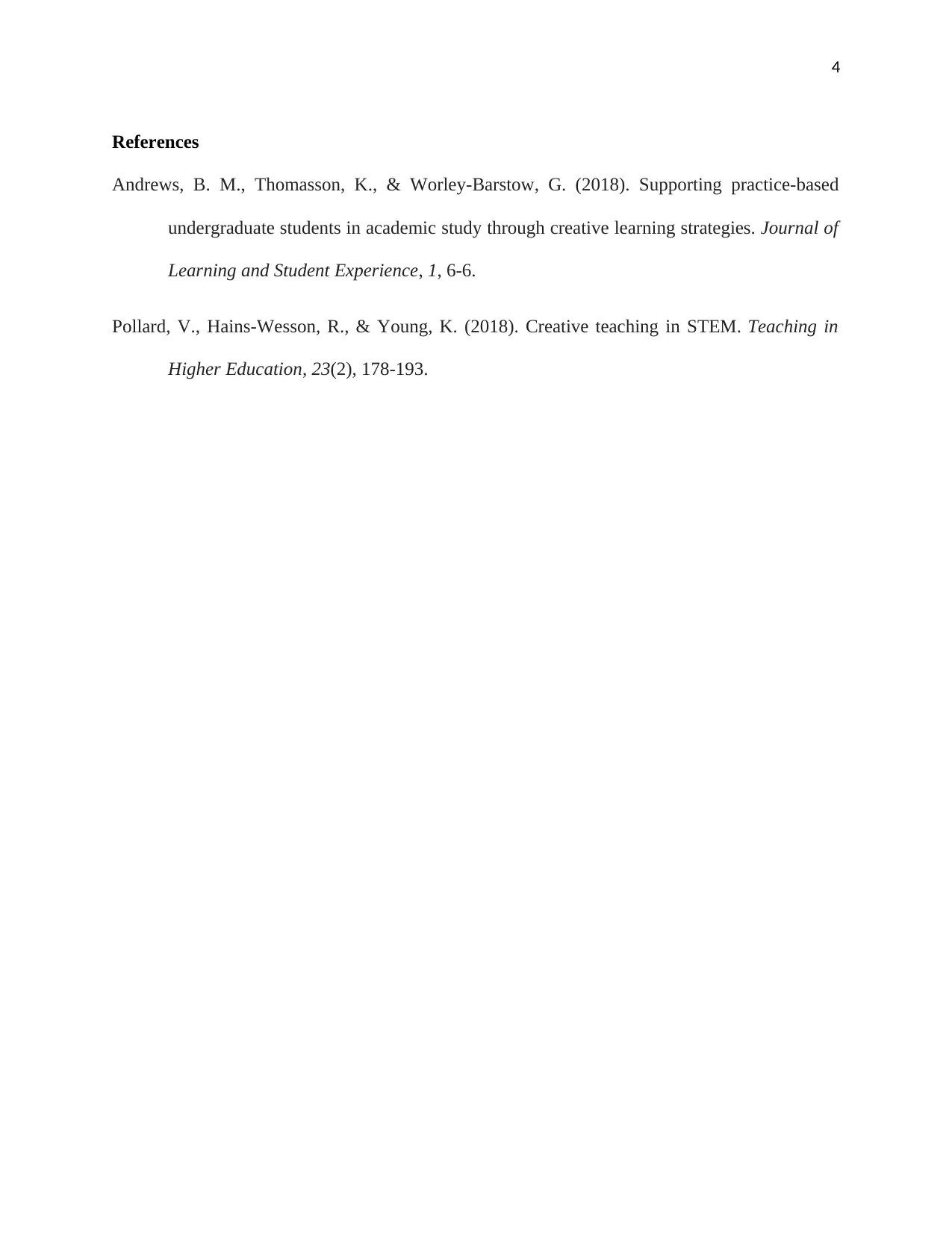Creative Teaching Evaluation: Assessing Student Engagement
VerifiedAdded on 2022/08/25
|5
|424
|19
Homework Assignment
AI Summary
This assignment evaluates creative teaching methods, focusing on the integration of art and its impact on student learning. The evaluation assesses key aspects of effective pedagogy, including student engagement, age appropriateness, cultural inclusivity, and the use of available resources. The assignment examines how well the teaching experiences connect with the children's world and whether they promote children's voices and active participation. Furthermore, it explores the potential for extending children's learning and the appropriateness of the learning environment. The assessment includes a series of questions designed to analyze the effectiveness of the teaching methods and their alignment with educational goals. The assignment emphasizes the importance of reflecting on the experiences created for children to ensure relevance and engagement, promoting a strong connection between home and school environments.
1 out of 5












![[object Object]](/_next/static/media/star-bottom.7253800d.svg)